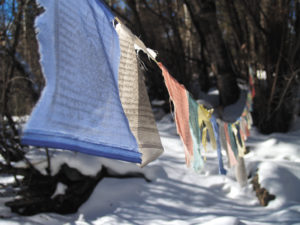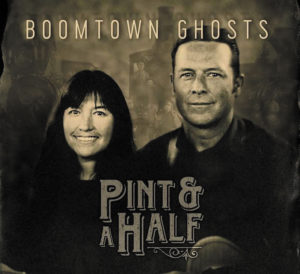By John Mattingly
Temperatures in the Valley have been warm this season, and modeling shows spring arriving two to three weeks early this year. The notion that the weather and climate have a timetable may be a prime example of hubris, but there clearly are signals in global weather that are changing, and whether they are human-caused or cyclical, or a combination of both, does not change the needs of adaptation.
In the Valley, from 1988 until now – the period in which I farmed in the Valley – a couple of changes correlate to a longer growing season. Acknowledging that correlation is not causation, it is true that from roughly 1995 to present, winter wheat, aka HRWW for hard red winter wheat, and winter rye have become a regular crop in the Valley, when prior to that time, winter wheat was not thought to be viable because of the cold temperatures and late spring frosts. If the wheat crown is frozen for long periods it dehydrates and dies, and if the crown makes the winter, it will head out and a frost in late May or early June will cause a lot of blanks in the wheat head.
Planting HRWW has several advantages. Yield is one. A winter wheat crop in the Valley can yield in the 150 bushels per acre range, which is comparable to, if not slightly superior to, most spring wheat varieties. Second, the HRWW crop is well tillered in April and May and thus not as susceptible to damage from the spring winds of those months. Spring-planted wheat means the crop will be no more than a sprout when the cold spring winds blast through daily. Third, the HRWW crop takes better advantage of spring moisture, thus maturing on less water. Finally, the harvest of HRWW is earlier than for spring-planted wheat, and this evens out the demand on the itinerant harvesting crews. Winter rye planted after potatoes can reduce wind erosion and provide green manure benefits.
[InContentAdTwo]
In the last thirty years, there is a consensus that flies, gnats, mosquitoes, ticks and fleas are active at least a month earlier, and their peak activity lasts at least two weeks longer, since the mid-1980s. An unlucky bite can be crippling, and explosions of mice can be annoying at best, and deadly at worst, from the dreaded Hantavirus.
Finally, gophers have become a major problem on many fields in the Valley. A gopher-infested alfalfa field makes for a very tedious harvest because the crop is full of moist mounds of dirt from gopher diggings that are the size of a wheelbarrow. Haying equipment is not designed to harvest dirt, and the result is a slow harvest and literally dirty hay, which isn’t necessarily bad for ungulates and horses, but adds weight that hay buyers don’t like to pay for, and fills feed bunks with dirt. The rise of gopher populations correlates to warmer winters in the Valley. Again, correlation is not causation, but it’s tempting to see a warmer climate contributing to a problem that is difficult to control.
Having personal experience with the gopher battle, it is like many modern problems: there is no good solution. Trapping adds a considerable expense to monitor the 130 acres under a center pivot of alfalfa, particularly as hay prices have declined recently, but trapping is considered the best strategy. However, this strategy simply selects for those gophers who can outwit the traps by piling dirt on them to set them off. For a period, trapping seems to work, as the number and persistence of diggings declines. But then the population explodes with the generations of smart gophers who cannot be trapped. One female can produce two or three litters of twenty in one year.
When trapping fails, frustration mounts and some farmers turned to a system that blew propane into the gopher tunnel system and then created a spark that literally exploded the network, the MOAB for gophers. While satisfying, the process never killed enough gophers, and caused the gophers to design subterranean homes with barricades and diversions that were safe from explosion. Another strategy is poison. This requires a machine to knife into the ground a bead of poison grain. Apart from spreading a poison into the biome when raptors and scavengers eat the dead carcasses, the knifing process tears up the alfalfa field with ridges, made larger by the wrapping of alfalfa roots around the blade of the knife.
But the obvious shortfall of all gopher control strategies is that, in an alfalfa field, once the alfalfa is growing, there is no way to control the gophers. The time between executing a control measure and the harvest of the alfalfa is about one month, and in that time surviving gophers can populate the field with mounds of dirt so numerous that a person can walk across an entire field by stepping from one mound to the next.
When new crops, creatures and behaviors happen, it can be difficult to get a truly scientific confirmation of why they have happened. It takes a special group of correlations to result in causation, and not all of the warming changes at a net negative. The warming change that allows winter wheat in the Valley is a positive one, but the insect, rodent and gopher surges are troubling, especially when you realize that the insects, rodents and scavengers on Earth could eat all human beings in less than 24 hours.



